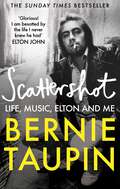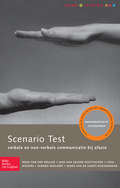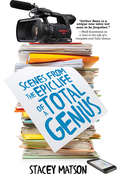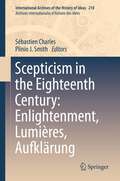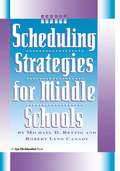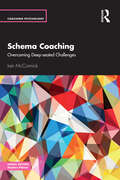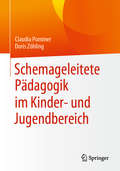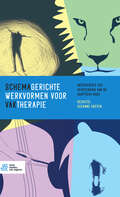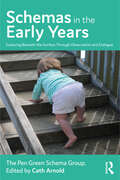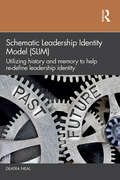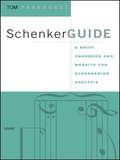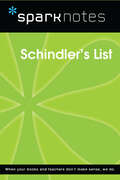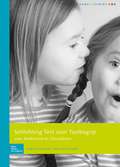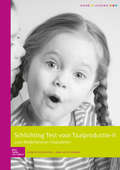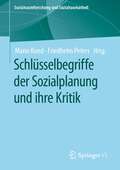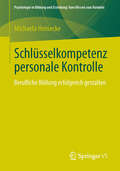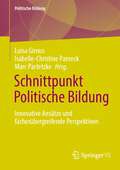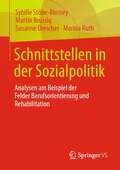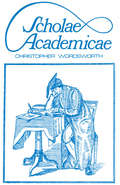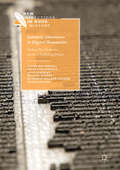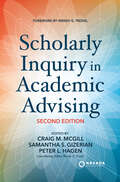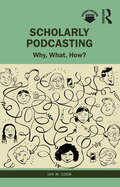- Table View
- List View
Scattershot: Life, Music, Elton and Me
by Bernie Taupin'This is the most glorious of books. I am besotted by the life I never knew he had.' -Elton John'Orgasmic. Every page of Scattershot is a delight, a joy, a name-dropper fan's delight. Divine. I couldn't put it down.' -Pete Townshend'In Bernie Taupin's miraculous memoir Scattershot you'll meet legends, cowboys, geniuses, unforgettable faces in the night, shady purveyors of outrageous fortune, warriors of the heart, and most of all, Taupin himself. Hilarious and so emotionally true, Scattershot is like a letter from a cherished friend. You'll want to keep it close, so you can read it again and again.' -Cameron Crowe'Touching. Charming. Humble. Witty. And exquisitely written. Taupin's words need no musical accompaniment. They sing with a poets voice.' -Gary Oldman'Eloquent and inspiring, Scattershot is a freewheeling memoir that is as warm and evocative as Bernie Taupin's most memorable lyrics. A born storyteller, Taupin gives us the life of an artist whose outlook was shaped by a rare but fascinating blend of lifelong innocence and endless intellectual curiosity.' -Robert Hilburn, author of Johnny Cash: The LifeThis is the memoir music fans have been waiting for. Half of one of the greatest creative partnerships in popular music, Bernie Taupin is the man who wrote the lyrics for Elton John, who conceived the ideas that spawned countless hits, and sold millions and millions of records. Together, they were a duo, a unit, an immovable object. Their extraordinary, half-century-and-counting creative relationship has been chronicled in biopics (like 2019's Rocketman) and even John's own autobiography, Me. But Taupin, a famously private person, has kept his own account of their adventures close to his chest, until now.Written with honesty and candour, Scatterhot allows the reader to witness events unfolding from Taupin's singular perspective, sometimes front and center, sometimes from the edge, yet always described vibrantly, with an infectious energy that only a vivid songwriter's prose could offer. From his childhood in the East Midlands of England whose imagination was sparked and forever informed by the distinctly American mythopoetics of country music and cowboys, to the glittering, star-studded fishbowl of '70s and '80s Beverly Hills, Scattershot is simultaneously a Tom Jones-like picaresque journey across a landscape of unforgettable characters, as well as a striking, first-hand account of a creative era like no other and one man's experience at the core of it.An exciting, multi-decade whirlwind, Scattershot whizzes around the world as we ride shotgun with Bernie on his extraordinary life. We visit New York with him and Elton on the cusp of global fame. We spend time with him in Australia almost in residency at an infamous rock 'n' roll hotel in an endless blizzard of drugs. And we spend late, late night hours with John Lennon, with Bob Marley, and hanging with Frank Sinatra. And beyond the world of popular music, we witness memorable encounters with writers like Graham Greene, painters like Andy Warhol and Salvador Dali, and scores of notable misfits, miscreants, eccentrics, and geniuses, known and unknown. Even if they're not famous in their own right, they are stars on the page, and we discover how they inspired the indelible lyrics to songs such as "Tiny Dancer," "Candle in the Wind," "Bennie and The Jets," and so many more.Unique and utterly compelling, Scattershot will transport the reader across the decades and around the globe, along the way meeting some of the greatest creative minds of the 20th century, and into the vivid imaginings of one of music's most legendary lyricists.
Scenario Test handleiding: Verbale en non-verbale communicatie bij afasie
by I. van der Meulen J. van Gelder-Houthuizen J. Wiegers S. Wielaert M. Sandt-KoendermanMeet: verbale en non–verbale communicatie vaardigheden van afasiepatienten.Leeftijdsbereik: volwassen afasiepatienten.Afname en scoringsduur: 30–40 minutenToepasbaar in: o.a. revalidatiecentra, verpleeghuizen, logopedische praktijkKwalificatieniveau: 1 (o.a. logopedisten en klinisch linguisten).Doel van de testDe Scenario Test meet de communicatieve vaardigheden van afasiepatienten in alle beschikbare communicatiekanalen. De test richt zich dus niet alleen op de mogelijkheid tot informatieoverdracht via het spreken, maar onderzoekt ook de mogelijkheden tot informatieoverdracht via alternatieve communicatiekanalen. Hieronder vallen de non–verbale communicatiekanalen (bijvoorbeeld mimiek, gebaren of tekenen), schrijven of schriftelijke ondersteuning en het gebruik van communicatiehulpmiddelen (bijvoorbeeld het Gespreksboek of een elektronisch communicatieapparaat).De Scenario Test is in eerste instantie bedoeld voor afname bij mensen met een matige tot ernstige afasie, bij wie de therapie gericht is op het inschakelen van alternatieve communicatiekanalen. Voor het succes van dergelijke therapie is het van belang om inzicht te hebben in de vraag of iemand in staat is tot het gebruik van alternatieve communicatie.Therapie gericht op alternatieve communicatie wordt vooral gegeven aan afasiepatienten bij wie het spreken niet of nauwelijks meer mogelijk is, zoals bij mensen met een globale of Broca afasie. De Scenario Test kan echter ook informatief zijn bij mensen met een lichtere afasie om na te gaan of zij hun verbale communicatie ondersteunen met alternatieve strategieen. Bij Wernicke patienten met spraakdwang en een slecht ziekte–inzicht is de test vaak niet afneembaar. Bijzonder aan de Scenario Test is dat er interactie is tussen de afasiepatient en de testleider.Communicatie is immers interactief en succesvolle communicatie bij personen die niet of nauwelijks meer kunnen spreken is sterk afhankelijk van de houding van de communicatiepartner. In de Scenario Test is de rol van de communicatiepartner daarom structureel opgenomen. Met de Scenario Test wordt systematisch nagegaan of iemand een bepaalde vorm van (alternatieve) communicatie beheerst, en of hij hier zelfstandig gebruik van maakt, of met hulp van een communicatiepartner. De Scenario Test biedt zo aanknopingspunten voor therapie gericht op het inzetten van alternatieve communicatieve kanalen en stelt daarnaast het effect van dergelijke therapie vast.ToepassingDiagnostiek: meet de verbale– en alternatieve communicatieve vaardigheden van afasiepatienten en de mate waarin patienten hiervoor afhankelijk zijn van hun communicatiepartner.Therapiekeuze: bepaalt welke vorm van alternatieve communicatietherapie voor een patient het meest geschikt is.Evaluatie: meet het effect van de gegeven therapie.Advisering: voor het opstellen van communicatieadviezen voor de omgeving van de patient.Materiaal Scenario Test complete set (handleiding, testmateriaal, scoreformulieren)Scenario Test scoreformulierenScenario Test handleiding
Scenes from the Epic Life of a Total Genius
by Stacey MatsonLights! Camera! Action! Arthur Bean is ready to have the best year any eighth grader has ever had. The awesome zombie movie he's writing with BFF Robbie Zack is definitely going to be a blockbuster. He even has a girlfriend. Yes, that's right, a GIRLFRIEND! With everything lined up so nicely, he's sure his teachers will start to appreciate his true genius this year. Except for the little problem of the movie camera Arthur and Robbie "borrowed" to film their upcoming blockbuster movie. And then Arthur's girlfriend gets jealous of his friendship with Kennedy. And there's the actual co-writing, producing, and directing of their film...Drama is definitely on the menu for this year. Arthur would just prefer it stay confined to his script.
Scepticism in the Eighteenth Century: Enlightenment, Lumières, Aufklärung
by Sébastien Charles Plínio J. SmithThe Age of Enlightenment has often been portrayed as a dogmatic period on account of the veritable worship of reason and progress that characterized Eighteenth Century thinkers. Even today the philosophes are considered to have been completely dominated in their thinking by an optimism that leads to dogmatism and ultimately rationalism. However, on closer inspection, such a conception seems untenable, not only after careful study of the impact of scepticism on numerous intellectual domains in the period, but also as a result of a better understanding of the character of the Enlightenment. As Giorgio Tonelli has rightly observed: "the Enlightenment was indeed the Age of Reason but one of the main tasks assigned to reason in that age was to set its own boundaries." Thus, given the growing number of works devoted to the scepticism of Enlightenment thinkers, historians of philosophy have become increasingly aware of the role played by scepticism in the Eighteenth Century, even in those places once thought to be most given to dogmatism, especially Germany. Nevertheless, the deficiencies of current studies of Enlightenment scepticism are undeniable. In taking up this question in particular, the present volume, which is entirely devoted to the scepticism of the Enlightenment in both its historical and geographical dimensions, seeks to provide readers with a revaluation of the alleged decline of scepticism. At the same time it attempts to resituate the Pyrrhonian heritage within its larger context and to recapture the fundamental issues at stake. The aim is to construct an alternative conception of Enlightenment philosophy, by means of philosophical modernity itself, whose initial stages can be found herein.
Scheduling Strategies for Middle Schools
by Michael D. Rettig Robert Lynn CanadyWith over 150 sample schedules, this book shows how scheduling strategies can enhance your school's capacity to offer exploratory courses, interdisciplinary teaching teams, teacher-based guidance programs, and other programs and practices which are responsive to the needs of early adolescents.
Schema Coaching: Overcoming Deep-seated Challenges (Coaching Psychology)
by Iain McCormickSchema Coaching is an informative guide for coaches, providing readers with a powerful and evidence-based approach to dealing with persistent personal difficulties.Schema coaching has a strong foundation in schema therapy which has been used in many parts of the world for over 20 years as a highly successful approach for helping clients with anxiety and depression, as well as more severe personality disorders. The book provides clear practical guidelines, illustrative case studies and reflective practice exercises to those who wish to implement a range of schema techniques when coaching with the non-clinical population. The book is in two parts, the first is primarily designed for coaches that do not have clinical, counselling or psychotherapy training and the second includes more advanced techniques which are designed for coaches with this type of training or qualifications. It also clearly sets out the ethical steps any coach should undertake before using therapeutic techniques with a client.This will be an informative and engaging resource in a new and extremely important area of coaching, suitable for coaches, coaching psychologists, coaching educators, and anyone with a general interest in this topic.
Schemageleitete Pädagogik im Kinder- und Jugendbereich
by Claudia Pommer Doris ZöhlingSchemageleitete Pädagogik ist die konsequente Anwendung des aktuellen Wissensstandes über die Folgen und Symptome von stark belasteten Kinder- und Jugendlichen mit ihren Familiensystemen zur Gestaltung des sozialpädagogischen Alltags. Dabei baut sie eine Brücke von der Schematherapie zur sozial- und heilpädagogischen Praxis in Kindergärten, Schulen und Kinder- und Jugendhilfeeinrichtungen. Für ErzieherInnen, LehrerInnen, SozialpädagogInnen, PsychologInnen und SozialarbeiterInnen dient das Buch als Einführung in dieses innovative Konzept und praktische Handreichung.
Schemagerichte werkvormen voor vaktherapie: Interventies ter versterking van de adaptieve modi
by Suzanne HaeyenDit boek biedt vaktherapeuten nieuwe ideeën, herkenning en handvatten om gezonde patronen, zelfregie en welbevinden bij hun cliënten te versterken. Het bevat 158 schemagerichte werkvormen voor vijf verschillende vaktherapieën: beeldende therapie, danstherapie, dramatherapie, muziektherapie en psychomotorische therapie. Dit boek is practice based en behandelt ook de nodige wetenschappelijke evidence voor vaktherapie. Daarmee is het waardevol voor zowel professionals uit het werkveld als voor studenten. Er werkten 36 experts aan dit boek mee. Schemagerichte werkvormen voor vaktherapie koppelt vaktherapie aan Schematherapie en Positieve Psychologie. De focus ligt hierbij op het versterken van de adaptieve schemamodi: de Gezonde Volwassene en het Blije Kind. Door juist deze modi te versterken, kunnen therapeuten hun cliënten beter ondersteunen op weg naar herstel en meer welbevinden. Het uitgebreide kader, beschreven in de inleiding, vormt de basis voor de werkvormen. Deze werkvormen zijn allemaal ontwikkeld in de praktijk, tijdens het werken met cliënten met persoonlijkheidsstoornissen. Het laatste hoofdstuk gaat over bewijsvoering voor de behandeling van persoonlijkheidsstoornissen in vaktherapie. Dit biedt een overzicht van onderzoeksresultaten. Dr. Suzanne Haeyen is lector van het bijzonder lectoraat Vaktherapie bij Persoonlijkheidsstoornissen, en coördinator inhoud van de Master Vaktherapie aan de Hogeschool van Arnhem en Nijmegen. Verder is zij beeldend therapeut/senior-onderzoeker bij Scelta, expertisecentrum voor persoonlijkheidsproblematiek (GGNet) en voorzitter van de Vaktherapeutische staf van GGNet.
Schemas in the Early Years: Exploring Beneath the Surface Through Observation and Dialogue
by Cath ArnoldEvolved through conversations with key early childhood education experts, Schemas in the Early Years focuses on the value of ‘repeated patterns’ of action or ‘schemas’ in young children’s play. It stimulates readers to ask questions of themselves, to watch children closely, and to create a dialogue with parents and other educators as well. Contributors to this fascinating book discuss their observation of children in naturalistic situations when they are deeply involved in play and identify topics or themes that can be linked to and inspire professional development opportunities. This book provides an antidote to beginning with the curriculum rather than the child and really considers children as learners. Each chapter focuses on young children and schemas, considering a wide age range from babies to children attending statutory schooling. Schemas in the Early Years is an accessible and inspiring text and serves as essential reading for educators wanting to think further and in more depth about schemas. Newcomers to schema theory or anyone currently using schema theory to understand children will also find these enquiries useful. All royalties from the sale of this book will be donated to Shelter – the housing and homelessness charity.
Schematic Leadership Identity Model (SLIM): Utilizing History and Memory to Help Re-define Leadership Identity
by Deatra L NealA workbook for leaders who desire to be more effective and deliberate in their leadership identity and for young leaders coming into their own, this book introduces a unique two-step process to understand and define your leadership identity. While some leadership frameworks operate under static concepts of what makes a good leader, the Schematic Leadership Identity Model (SLIM) offers new and seasoned leaders an opportunity to explore the anchoring of who they are and the ebbs and flows of their attitudes and behaviors through life’s changes and experiences. The SLIM framework has two main footings of its seven phases: revolution, which is the recognition of one’s identity journey, and the theoretical constructs that help frame the process and evolution, a series of assignments and journal entries that helps each leader acknowledge their current leadership identity, unravel habits and behaviors that may not align with their idealized self, and redefine their leadership identity based on their findings and whom they aspire to be. The evolutionary design is a system necessary to be revisited as a leader goes deeper into their memories and experiences. This framework helps unearth unconscious and implicit biases that can hinder a leader’s social and cultural capital. No matter the industry or discipline, SLIM offers leaders a self-guided process of discovery that can profoundly examine the root causes of behaviors and attitudes to create meaningful change within themselves that can produce significant positive changes in their teams and organizations.
SchenkerGUIDE: A Brief Handbook and Website for Schenkerian Analysis
by Thomas PankhurstSchenkerGUIDE is an accessible overview of Heinrich Schenker's complex but fascinating approach to the analysis of tonal music. The book has emerged out of the widely used website, www.SchenkerGUIDE.com, which has been offering straightforward explanations of Schenkerian analysis to undergraduate students since 2001. Divided into four parts, SchenkerGUIDE offers a step-by-step method to tackling this often difficult system of analysis. Part I is an introduction to Schenkerian analysis, outlining the concepts that are involved in analysis Part II outlines a unique and detailed working method to help students to get started on the process of analysis Part III puts some of these ideas into practice by exploring the basics of a Schenkerian approach to form, register, motives and dramatic structure Part IV provides a series of exercises from the simple to the more sophisticated, along with hints and tips for their completion.
Schindler's List (SparkNotes Film Guide)
by SparkNotesSchindler's List (SparkNotes Film Guide) Making the reading experience fun! SparkNotes Film Guides are one-stop guides to great works of film–masterpieces that are the foundations of filmmaking and film studies. Inside each guide you&’ll find thorough, insightful overviews of films from a variety of genres, styles, and time periods. Each film guide contains:Information about the director and the context in which the film was made Thoughtful analysis of major characters Details about themes, motifs, and symbols Explanations of the most important lines of dialogue In-depth discussions about what makes a film so remarkable SparkNotes Film Guides are an invaluable resource for students or anyone who wants to gain a deeper understanding of the great films they know and love.
Schlichting Test voor Taalbegrip - Handleiding
by L. SchlichtingDoel van de testDe Schlichting Test voor Taalbegrip meet het receptieve taalniveau van jonge kinderen. De test is opgebouwd uit 7 secties die de ontwikkeling van het taalbegrip van jonge kinderen nauwkeurig volgen. Toepassing• diagnostiek: stelt de van aanwezigheid van receptieve taalontwikkelingsstoornissen vast met het oog op behandeling, aanvraag van leerlinggebonden financiering, doorverwijzing naar het speciaal onderwijs (cluster-2) of voor wetenschappelijk onderzoek.• Evaluatie: meet het effect van gegeven therapie.Wat meet de Schlichting Test voor Taalbegrip?Met de Schlichting Test voor Taalbegrip wordt de receptieve taalvaardigheid door middel van de volgende opdrachten vastgesteld: • Woordbegrip (aanwijzen van voorwerpen, uitvoeren van opdrachten met concreet materiaal en meerkeuzevragen.• Zinsbegrip• Complexe opdrachten. Voor wie?De Schlichting Test voor Taalbegrip wordt afgenomen door logopedisten, klinisch linguïsten, orthopedagogen en andere diagnostisch bevoegde professionals.Afname en scoringDe Schlichting Test voor Taalbegrip wordt individueel bij kinderen afgenomen. De afnameduur is gemiddeld 45 minuten (afhankelijk van de leeftijd van het kind). Bij de testafname wijst het kind volgens een gestandaardiseerde opzet de gevraagde voorwerpen aan of voert er handelingen mee uit. De test heeft instap- en afbreekregels. Belangrijk: u kunt deze test alleen afnemen indien u over de Schlichting Test voor Taalbegrip complete set beschikt.Normen De test is genormeerd op een representatieve steekproef van ca. 2200 Nederlands sprekende kinderen uit Nederland en Vlaanderen, verdeeld over de volgende leeftijdsgroepen: 1;9 – 2;3 – 2;9 – 3;3 – 3;9 – 4;3 – 5;3 – 5;10 – 6;6 – 7;3. In de handleiding wordt het Nederlandse en Vlaamse psychometrische onderzoek beschreven. Voor Turks sprekende kinderen is een ongenormeerde Turkse versie van sectie A tot en met D beschikbaar.Volgens de kwaliteitseisen van de WAII is de ’Schlichting Test voor Taalbegrip’ geschikt voor het gebruik bij indicatiestelling.Materiaal• Schlichting Test voor Taalbegrip – complete set• Schlichting Test voor Taalbegrip – scoreformulieren (set van 25)• Schlichting Test- Turkse scoreformulieren (set van 25)• Schlichting Test voor Taalbegrip – handleiding
Schlichting Test voor Taalproductie - Handleiding: voor Vlaanderen en Nederland
by L. SchlichtingDoel van de testDe Schlichting Test voor Taalproductie - II meet het niveau van expressieve taalvaardigheid van jonge kinderen. De test bevat de volgende onderdelen:• Test voor Zinsontwikkeling: meet de actieve syntactische ontwikkeling dmv items waarmee een zin aan het kind wordt ontlokt. • Test voor Woordontwikkeling: meet de productieve woordenschat, door het benoemen van voorwerpen en plaatjes.• Verhaaltest: meet de spontane taalproductie van kinderen, waarbij het kind aan de hand van plaatjes een verhaaltje navertelt. • Test voor Auditief geheugen: meet het verbaal werkgeheugen dmv het nazeggen van eenlettergrepige woorden.• Pseudowoorden: meet de fonologische ontwikkeling van kinderen dmv het nazeggen van nonsenswoorden. Toepassing• Individuele diagnostiek: stelt de aanwezigheid van expressieve taalontwikkelingsstoornissen vast met het oog op behandeling, doorverwijzing naar het speciaal onderwijs of voor wetenschappelijk onderzoek.• Evaluatie: meet het effect van gegeven therapie.De Schlichting Test voor Taalproductie - II staat op de lijst van de Commissie Indicatiestelling (WAII) als aanbevolen test voor indicatiestelling voor het speciaal onderwijs (cluster-2) en leerlinggebonden financiering.Wat meet de Schlichting Test voor Taalproductie - II?Met de Schlichting Test voor Taalproductie - II kan de algemene taalvaardigheid van jonge kinderen in het domein van productie worden vastgesteld. De volgende gebieden worden getest:• Woordniveau• Zinsniveau• (Semi-) spontane taal• Verbaal werkgeheugen• Fonologisch werkgeheugen• Fonologische verwerkingVoor wie?De Schlichting Test voor Taalproductie - II wordt afgenomen door logopedisten, klinisch linguïsten en andere diagnostisch bevoegde professionals, zoals orthopedagogen etc. Afname en scoringDe Schlichting Test voor Taalproductie - II wordt individueel bij kinderen afgenomen. De afnameduur is ca. 30-60 minuten (afhankelijk van de leeftijd van het kind en het aantal afgenomen testonderdelen). Bij de testafname wordt volgens een gestandaardiseerde opzet een reactie aan het kind ontlokt door middel van het gebruik van afbeeldingen of voorwerpen. De verschillende testonderdelen kunnen elk apart worden afgenomen en leveren per onderdeel standaardscores op. Voor elk onderdeel gelden instap- en afbreekregels. Er wordt handmatig gescoord. De ruwe scores kunnen vervolgens handmatig worden omgezet of geautomatiseerd met behulp van Testweb.Belangrijk: u kunt deze test alleen afnemen indien u over Schlichting Test voor Taalproductie-II complete set beschikt.Normen De test is genormeerd op een representatieve steekproef van ca. 2200 Nederlands sprekende kinderen uit Nederland en Vlaanderen, verdeeld over de volgende leeftijdsgroepen: 1;9 – 2;3 – 2;9 – 3;3 – 3;9 – 4;3 – 5;3 – 5;10 – 6;6 – 7;3. In de handleiding wordt het Nederlandse en Vlaamse psychometrisch onderzoek beschreven. Voor Turks sprekende kinderen is een ongenormeerde Turkse versie van item 1 tot en met 40 van de Test voor Woordontwikkeling beschikbaar.Materiaal• Schlichting Test voor Taalproductie II – complete set• Schlichting Test voor Taalproductie II – scoreformulieren• Schlichting Test Turkse scoreformulieren• Schlichting Test voor Taalproductie II – handleiding
Schlüsselbegriffe der Sozialplanung und ihre Kritik (Sozialraumforschung und Sozialraumarbeit #23)
by Mario Rund Friedhelm PetersSozialplanung kann eine wichtige Grundlage für die Gestaltung der Lebensbedingungen in denen Städten, Kreisen und Regionen sowie für die Sicherung der kommunalen Daseinsvorsorge darstellen. Wie sie diese Funktion jedoch wahrnimmt, wird maßgeblich von ihren politisch-administrativen Einbettungen sowie ihren inhärenten Rationalitäten und Wissensbeständen bestimmt.Ihre diskursiv verfasste Praxis gilt es gesellschaftstheoretisch und -politisch zu verstehen und zu kontextualisieren. Hierzu möchte der vorliegende Band Anregungen bieten. Daher versammelt er 15 zentrale Begriffe mit denen das Professions- und Handlungsfeld erschlossen werden kann.Der InhaltBeratung – Digitalisierung – Geschlecht / Gender – Gleichwertigkeit – Governance – Integrierte Planung – Kommunale Sozialpolitik – Mobilität – Netzwerke – Partizipation – Sozialberichterstattung – Sozialraum – Sozialraumentwicklung – Steuerung – WirkungDie ZielgruppenLehrende und Studierende der Sozialen Arbeit, der Politik-, Kultur- und Verwaltungswissenschaften sowie der Architektur und der Raumplanung.Praktiker*innen der Sozialplanung, der Sozialen Arbeit, der Sozialraumarbeit, der Stadtteilarbeit, der Gemeinwesenarbeit, des Quartiermanagements u. Ä.Die HerausgeberDr. Mario Rund ist Professor für Soziale Arbeit im Gemeinwesen an der Hochschule Darmstadt.Dr. Friedhelm Peters ist em. Professor für Theorien Sozialer Arbeit an der Fachhochschule Erfurt und der Ev. Hochschule Dresden.
Schlüsselkompetenz personale Kontrolle: Berufliche Bildung erfolgreich gestalten
by Michaela HeineckeUnternehmen und ihre Mitarbeiter schauen heute hoffnungsvoll auf Schlüsselkompetenzen. Die Fähigkeit, sich weiterzuentwickeln, ist ausschlaggebend für den Erfolg ganzer Volkswirtschaften geworden. Was können Personalentwickler und Bildungsverantwortliche in der Aus-, Fort- und Weiterbildung dafür tun? Personale Kontrolle ist die Schlüsselkompetenz, die den Zugang schafft. Handlungsnah, ökonomisch und doch auf alle Lebensbereiche übertragbar, hilft Personale Kontrolle nicht nur beim Erreichen von Unternehmens- und Karrierezielen. Sie reguliert das selbständige Lernen im Alltag, beim Blended Learning und auch in Krisenzeiten. Empirische Studien zeigen außerdem: Wer personale Kontrolle gezielt fördert, der eröffnet den Weg in eine Erfolgsspirale des Lernens.
Schnittpunkt Politische Bildung: Innovative Ansätze und fächerübergreifende Perspektiven (Politische Bildung)
by Marc Partetzke Isabelle-Christine Panreck Luisa GirnusDie multiplen Krisenerscheinungen unserer Zeit bleiben nicht ohne Konsequenzen für die Politische Bildung, zu deren Zielen die Befähigung ihrer Adressat:innen zur kompetenten Teilnahme und Teilhabe am gesellschaftlichen Leben gehört. Insofern verwundert es denn auch nicht, dass sich die Praxis Politischer Bildner:innen aus ganz unterschiedlichen wissenschaftlichen Disziplinen speist. Der Band nimmt sowohl Schnittmengen der Politikdidaktik mit anderen wissenschaftlichen Disziplinen als auch die der Politischen Bildung mit anderen Domänen in den Blick und will die spezifischen Perspektiven auf die globalen Herausforderungen unserer Zeit in einen konstruktiven Austausch bringen.
Schnittstellen in der Sozialpolitik: Analysen am Beispiel der Felder Berufsorientierung und Rehabilitation
by Sybille Stöbe-Blossey Marina Ruth Martin Brussig Susanne DrescherSchnittstellen entstehen, wenn es für Menschen in sozialen Risikosituationen Hilfen von unterschiedlichen Institutionen gibt. Das Buch präsentiert empirische Ergebnisse zur Arbeit an Schnittstellen in den Feldern „Berufsorientierung“ und „Rehabilitation“ und legt einen übergreifenden Analyserahmen zur Gestaltung von Schnittstellen im entwickelten Sozialstaat vor.
Schoenberg's Twelve-Tone Music
by Jack BossJack Boss takes a unique approach to analyzing Arnold Schoenberg's twelve-tone music, adapting the composer's notion of a 'musical idea' - problem, elaboration, solution - as a framework and focusing on the large-scale coherence of the whole piece. The book begins by defining 'musical idea' as a large, overarching process involving conflict between musical elements or situations, elaboration of that conflict, and resolution, and examines how such conflicts often involve symmetrical pitch and interval shapes that are obscured in some way. Containing close analytical readings of a large number of Schoenberg's key twelve-tone works, including Moses und Aron, the Suite for Piano Op. 25, the Fourth Quartet, and the String Trio, the study provides the reader with a clearer understanding of this still-controversial, challenging, but vitally important modernist composer.
Scholae Academicae: Some Account of the Studies at the English Universities in the 18th Century (Cambridge Library Collection - Cambridge Ser.)
by Christopher WordsworthFirst published in 1968. Routledge is an imprint of Taylor & Francis, an informa company.
Scholarly Adventures in Digital Humanities
by Claire Battershill Nicola Wilson Helen Southworth Alice Staveley Michael Widner Elizabeth Willson GordonThis book addresses the gap between print and digital scholarly approaches by combining both praxis and theory in a case study of a new international collaborative digital project, the Modernist Archives Publishing Project (MAPP). MAPP is an international collaborative digital project, funded by the Social Sciences and Humanities Research Council of Canada, that uses digital tools to showcase archival traces of twentieth-century publishing. The twenty-first century has witnessed, and is living through, some of the most dynamic changes ever experienced in the publishing industry, arguably altering our very understanding of what it means to read a book. This book brings to both general readers and scholarly researchers a new way of accessing, and thereby assessing, the historical meanings of change within the twentieth-century publication industry by building a resource which organises, interacts with, and uses historical information about book culture to narrate the continuities and discontinuities in reading and publishing over the last century.
Scholarly Community at the Early University of Paris
by Spencer E. YoungThis book explores the ways in which theologians at the early University of Paris promoted the development of this new centre of education into a prominent institution within late medieval society. Drawing upon a range of evidence, including many theological texts available only in manuscripts, Spencer Young uncovers a vibrant intellectual community engaged in debates on such issues as the viability of Aristotle's natural philosophy for Christian theology, the implications of the popular framework of the seven deadly sins for spiritual and academic life, the social and religious obligations of educated masters, and poor relief. Integrating the intellectual and institutional histories of the Faculty of Theology, Young demonstrates the historical significance of these discussions for both the university and the thirteenth-century church. He also reveals the critical role played by many of the early university's lesser-known members in one of the most transformative periods in the history of higher education.
Scholarly Inquiry in Academic Advising
by Craig M. McGill Samantha S. Gizerian Peter L. HagenCo-published with NACADAA large and growing number of academic advisors are interested in researching and publishing scholarly inquiry in academic advising. Since the first edition of this book was published, the scope of relevant inquiry has widened and deepened, and public attention and accountability is at an all-time high. This second edition of Scholarly Inquiry in Academic Advising provides scholar-practitioners with methodological perspectives from each of the major ways of knowing: the social sciences, including qualitative, quantitative, and now mixed methods approaches; the arts; the humanities; and the natural sciences. This book is a vade mecum for researchers in academic advising to formulate research questions, structure research, point to useful theoretical and methodological approaches, guide analysis, and help find publication outlets. Authors from a multitude of backgrounds seek to raise the level of discourse about academic advising, to illustrate its history, to reflect on how research can foster new perspectives, and to connect with and foster social justice, internationality, and inclusivity. This volume will assist those who seek to push back the frontiers of knowledge in the field, because it serves as a handbook for advising scholars, whatever their epistemological, theoretical, axiological, and methodological predilections. As for practitioners, this book “raises the bar” and conveys to even non-researching practitioners that scholarly inquiry in academic advising is a desirable avenue to professional development that must inform their practice.
Scholarly Podcasting: Why, What, How?
by Ian M. CookExploring what academic podcasting is and what it could be, this book is the first to consider the why, what, and how academics engage with this insurgent, curious craft. Featuring interviews with 101 podcasting academics, including scholars and teachers of podcasting, this book explores the motivations of scholarly podcasters, interrogates what podcasting does to academic knowledge, and leads potential podcasters through the creation process from beginning to end. With scholarship often trapped inside expensive journals, wrapped in opaque language, and laced with a standoffish tone, this book analyses the implications of moving towards a more open and accessible form. This book will also inform, inspire, and equip scholars of any discipline, rank, or affiliation who are considering making a podcast or who make podcasts with the background knowledge and technical and conceptual skills needed to produce high-quality podcasts through a reflexive critique of current practices.
Scholarly Publication Trajectories of Early-career Scholars: Insider Perspectives
by Pejman Habibie Sally BurgessThis edited book addresses the complex topic of writing for scholarly publication by early-career scholars. Drawing on self-study and auto-ethnographic perspectives, a group of international early-career researchers share their personal histories, narratives and first-hand accounts of their scholarly publication practices. The book helps paint a richer and more nuanced picture of the experiences, success stories, failures, and challenges that frame and shape academic trajectories of both Anglophone and English as an additional language (EAL) scholars in writing for publication. This book will be of particular interest to scholars of Applied Linguistics, English for academic purposes (EAP), and second language writing, but it will also be of use to other early-career scholars embarking on their first attempts at writing for publication.
